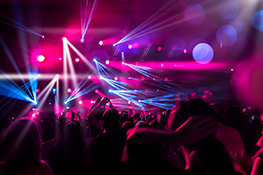Stage Lighting Trends to Watch in 2025 & Beyond
The world of stage lighting is constantly evolving, driven by technological advancements and the ever-changing demands of theatrical productions, concerts, and corporate events. 2025 and beyond promise a fascinating array of innovations, pushing creative boundaries and redefining how we illuminate performance spaces. This article explores some of the key trends shaping the future of stage lighting.
1. <h3>The Rise of Miniaturized LED Fixtures</h3>
LED technology continues its reign, but the focus is shifting towards miniaturization. Smaller, more powerful, and energy-efficient LED fixtures are becoming increasingly prevalent. This allows for greater design flexibility, enabling lighting designers to create more intricate and nuanced lighting schemes without the bulk and weight of traditional fixtures. We’re seeing a surge in smaller, easily concealable fixtures perfect for architectural lighting within set designs, as well as highly versatile units for close-up and accent lighting.
2. <h3>Immersive Lighting and Extended Reality (XR) Integration</h3>
XR technologies, encompassing Virtual Reality (VR), Augmented Reality (AR), and Mixed Reality (MR), are rapidly transforming the entertainment industry. Stage lighting is playing an integral role in creating truly immersive experiences. We can expect to see more seamless integration of lighting with XR content, where lighting effects are dynamically synchronized with virtual environments, enhancing the audience’s sense of presence and engagement. This requires sophisticated control systems and precise synchronization protocols, pushing the boundaries of what’s possible in live performance.
3. <h3>AI-Powered Lighting Control and Automation</h3>
Artificial intelligence is revolutionizing various sectors, and stage lighting is no exception. AI-powered control systems are becoming more sophisticated, allowing for automated lighting designs based on pre-programmed parameters or even real-time audience feedback. This not only streamlines the workflow for lighting designers but also opens up possibilities for dynamic and responsive lighting that adapts to the performance in real-time, creating a more engaging and immersive experience for the audience. Expect to see AI assisting in tasks such as color grading, fixture placement optimization, and even generating creative lighting cues.
4. <h3>Sustainable and Energy-Efficient Solutions</h3>
Environmental concerns are increasingly influencing design choices across all industries, and stage lighting is no different. The demand for sustainable and energy-efficient solutions is growing. This translates to a greater focus on LED technology, improved power management systems, and the development of fixtures with longer lifespans, minimizing waste and reducing the overall carbon footprint of productions.
5. <h3>Data-Driven Lighting Design and Analysis</h3>
The use of data analytics in stage lighting is on the rise. Sophisticated software is being developed to collect and analyze lighting data, allowing designers to optimize their work based on real-world performance metrics. This data can inform decisions regarding energy consumption, fixture placement, and overall lighting design effectiveness. This approach helps to improve efficiency and achieve more impactful results.
6. <h3>Wireless Control and Networking</h3>
Wireless control systems are becoming increasingly reliable and robust, offering greater flexibility and ease of use for lighting designers. The ability to control lighting fixtures wirelessly eliminates the need for extensive cabling, simplifying setup and reducing the risk of technical issues. Furthermore, networked lighting systems allow for greater control and coordination across multiple fixtures and locations, enhancing the possibilities for complex and dynamic lighting designs.
The future of stage lighting is bright, both literally and figuratively. These trends represent only a glimpse into the exciting innovations shaping the industry. As technology continues to evolve, we can expect even more groundbreaking developments in the years to come, pushing the boundaries of creativity and transforming the way we experience live performance.


 Auditorium Construction Services
Auditorium Construction Services 